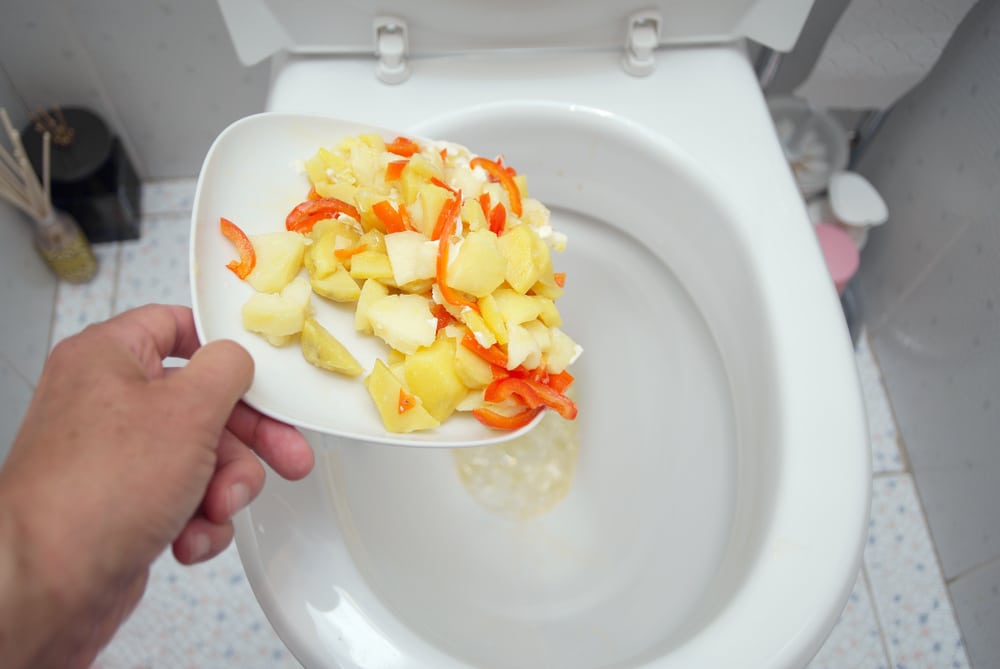Can One to Dispose of Food in the Toilet?
Can One to Dispose of Food in the Toilet?
Blog Article
They are making several great annotation regarding What Can Happen If You Flush Food Down the Toilet? overall in this content beneath.

Intro
Many people are commonly confronted with the issue of what to do with food waste, particularly when it concerns leftovers or scraps. One common question that emerges is whether it's alright to flush food down the toilet. In this post, we'll look into the reasons people might consider purging food, the effects of doing so, and different approaches for correct disposal.
Reasons why individuals could think about purging food
Lack of awareness
Some people might not understand the potential harm caused by purging food down the bathroom. They might wrongly believe that it's a safe technique.
Ease
Flushing food down the commode might appear like a fast and simple remedy to throwing away unwanted scraps, especially when there's no close-by garbage can readily available.
Negligence
In some cases, people may merely pick to flush food out of large laziness, without considering the consequences of their actions.
Consequences of flushing food down the toilet
Ecological effect
Food waste that ends up in rivers can contribute to air pollution and damage aquatic communities. In addition, the water made use of to flush food can stress water sources.
Pipes issues
Flushing food can bring about stopped up pipes and drains, creating costly pipes repair work and troubles.
Kinds of food that need to not be flushed
Coarse foods
Foods with coarse structures such as celery or corn husks can get tangled in pipes and cause blockages.
Starchy foods
Starchy foods like pasta and rice can absorb water and swell, resulting in clogs in pipes.
Oils and fats
Greasy foods like bacon or cooking oils must never be purged down the bathroom as they can strengthen and trigger blockages.
Proper disposal approaches for food waste
Utilizing a garbage disposal
For homes equipped with waste disposal unit, food scraps can be ground up and purged with the pipes system. Nevertheless, not all foods are suitable for disposal in this manner.
Recycling
Certain food product packaging materials can be reused, decreasing waste and minimizing environmental influence.
Composting
Composting is an eco-friendly means to throw away food waste. Organic materials can be composted and made use of to enhance soil for horticulture.
The importance of appropriate waste monitoring
Minimizing ecological harm
Correct waste monitoring practices, such as composting and recycling, aid lessen contamination and preserve natural deposits for future generations.
Securing plumbing systems
By avoiding the method of flushing food down the commode, homeowners can prevent pricey pipes repair work and maintain the stability of their plumbing systems.
Final thought
To conclude, while it may be appealing to flush food down the commode for comfort, it is essential to recognize the possible effects of this activity. By taking on correct waste monitoring practices and disposing of food waste properly, individuals can contribute to much healthier plumbing systems and a cleaner environment for all.
FLUSH FOOD DOWN THE TOILET?
FLUSHING FOOD CAN CAUSE BLOCKED DRAINS IN YOUR HOME
All of the plumbing fixtures in your home are connected to the same sewer pipe outside of your home. This outdoor sewer pipe is responsible for transporting all the wastewater from your home to the Council sewer mains. Even small pieces of food that go down the kitchen sink can cause problems for your sewer. It should therefore be obvious that flushing larger bits of food, such as meat, risks a clog in either the toilet itself or the sewer pipes. Flushing greasy food is even more problematic because oil coagulates when it cools, coating the interior lining of your pipes.
THE TOILET IS NOT A BIN
Food isn’t the only thing that people shouldn’t be flushing down the toilet. People use the toilet to dispose of all kinds of things such as tampons, makeup wipes, dental floss, kitty litter and even underwear. Water goes to great lengths to educate residents about the high costs and stress placed on wastewater treatment systems simply from people flushing the wrong stuff down the toilet. It costs taxpayers millions of dollars each year, and homeowners thousands in blocked drain repairs.
FLUSHING FOOD IS A WASTE OF WATER
Flushing food is a waste of our most precious resource - water. In June this year Level 1 water restrictions were introduced to protect water supply from drought conditions. Much of New South Wales continues to be affected by prolonged drought with recent figures revealing up to 97 per cent of the state remains in drought. Depending on whether you have a single or dual flush toilet, every single flush uses between five and 11 litres of water. In the current climate this is a huge amount of water to be wasting on flushing food that should be placed in the bin (or better yet, the compost).
https://www.jabplumbingsolutions.com.au/blog/can-you-flush-food-down-the-toilet

As an avid person who reads about , I imagined sharing that segment was a good thing. Remember to take the opportunity to promote this page if you enjoyed it. Thanks for taking the time to read it.
Prices & Booking Report this page